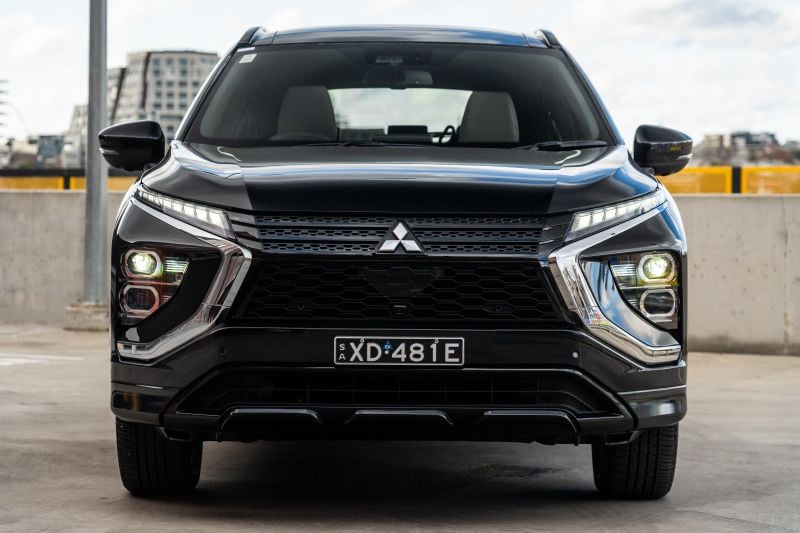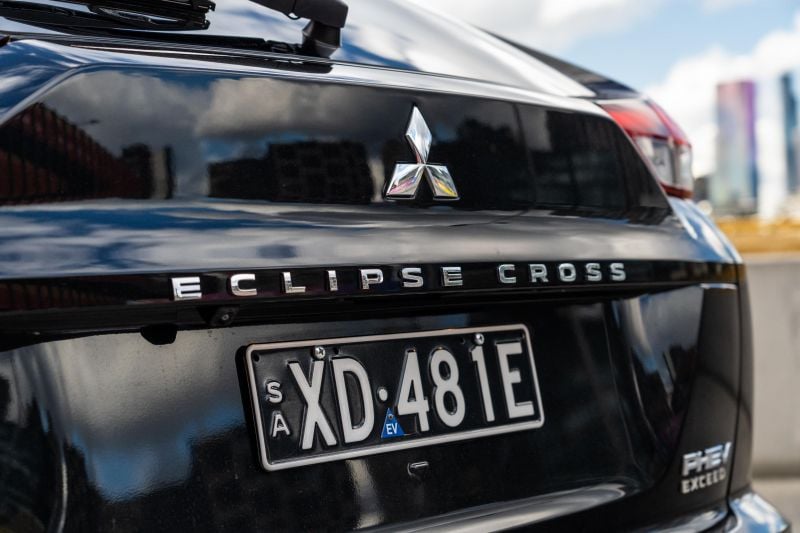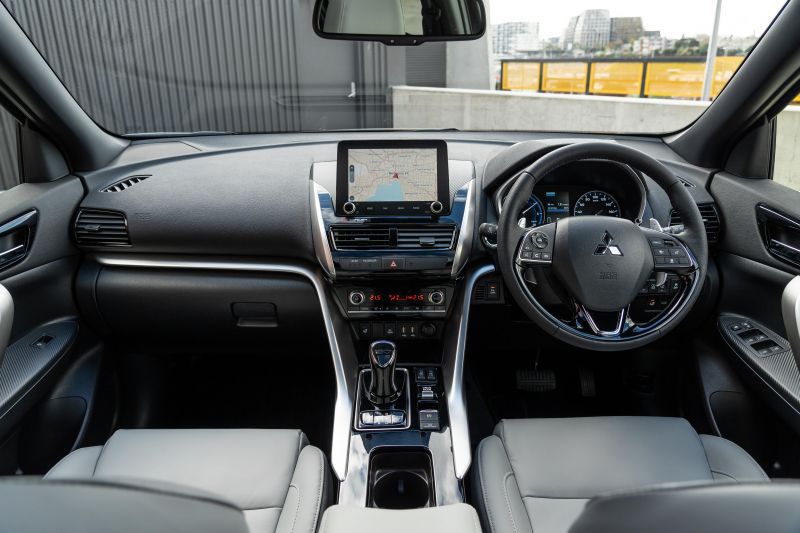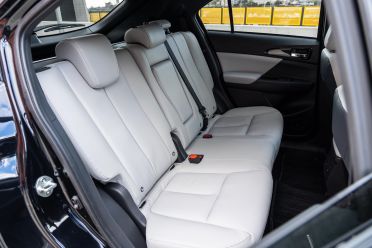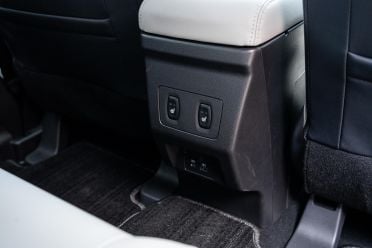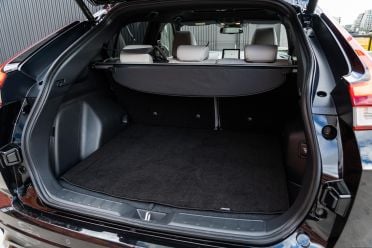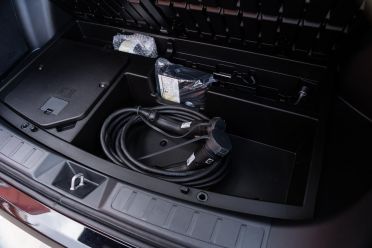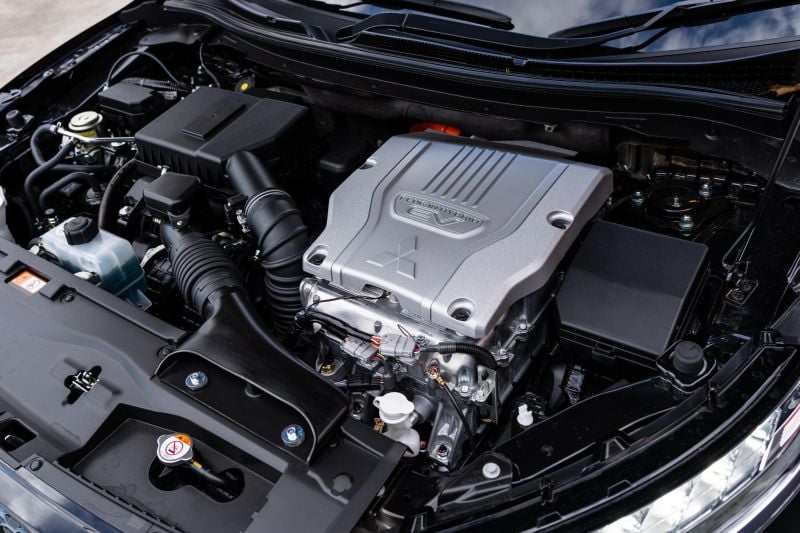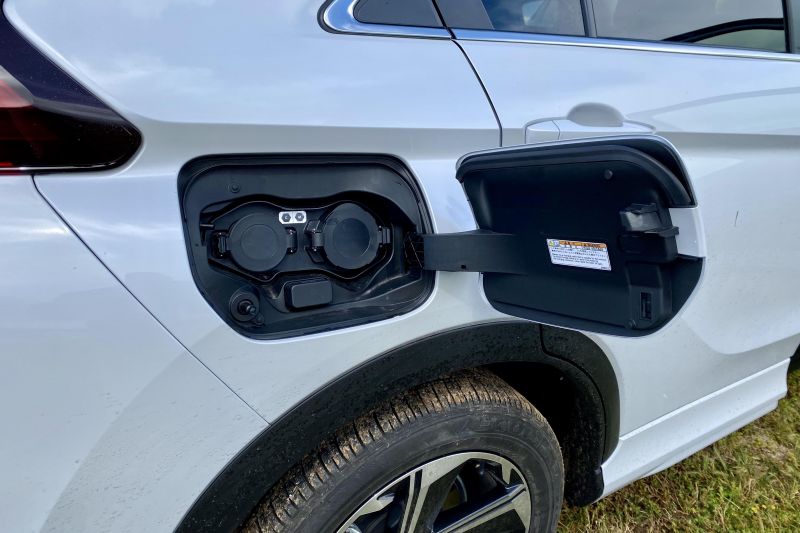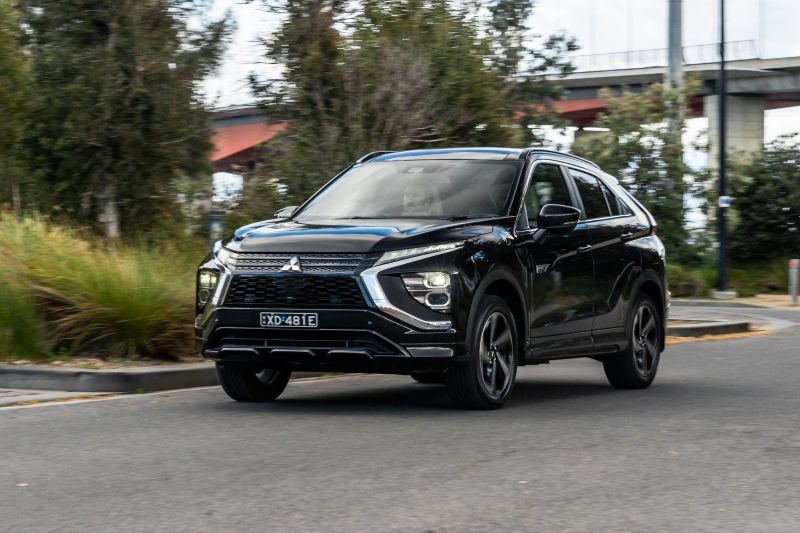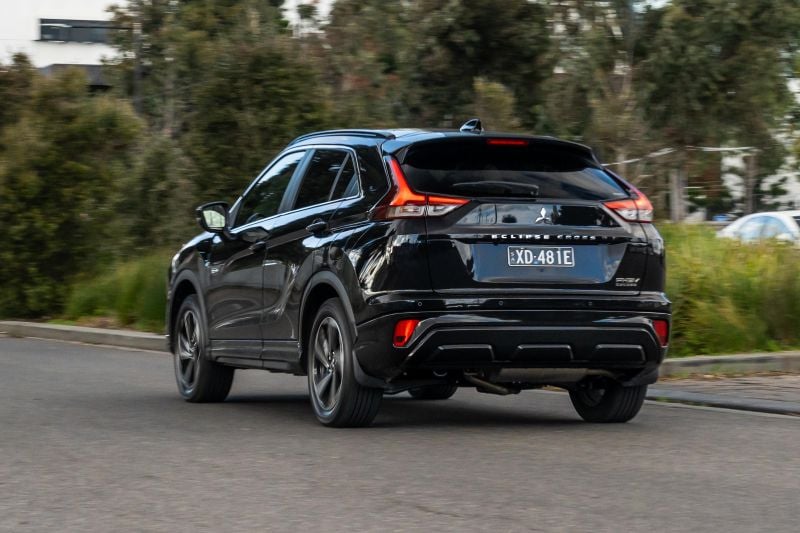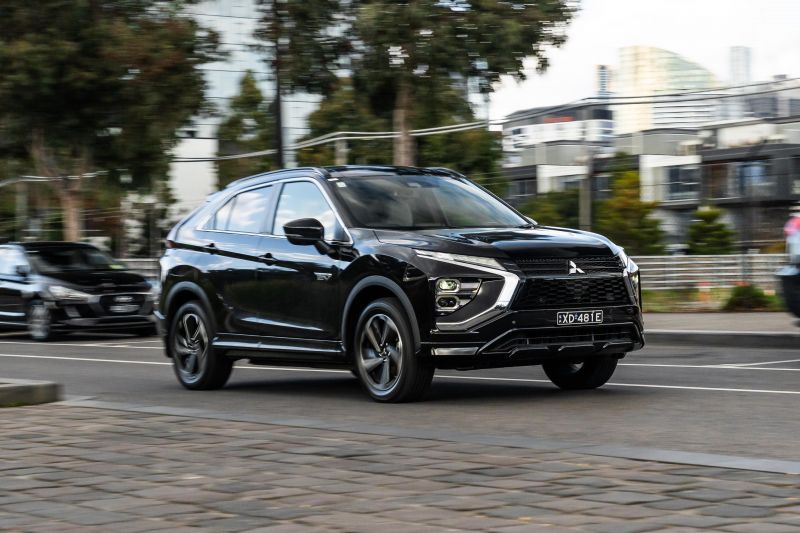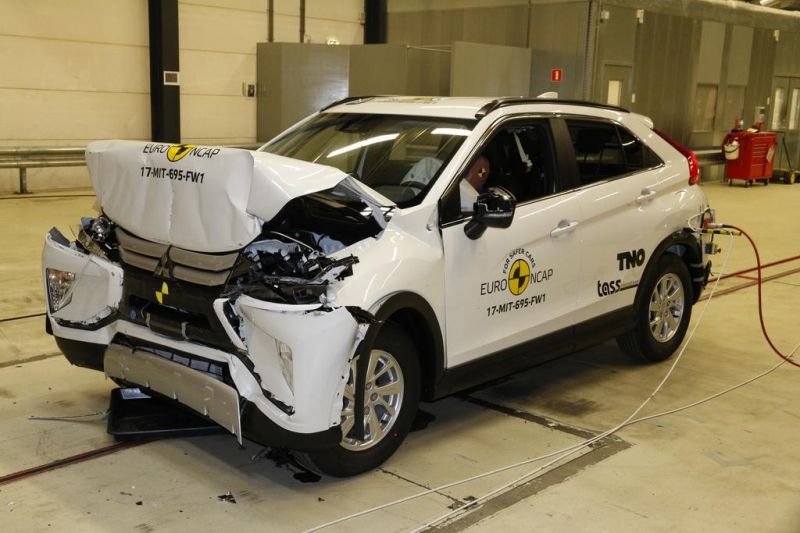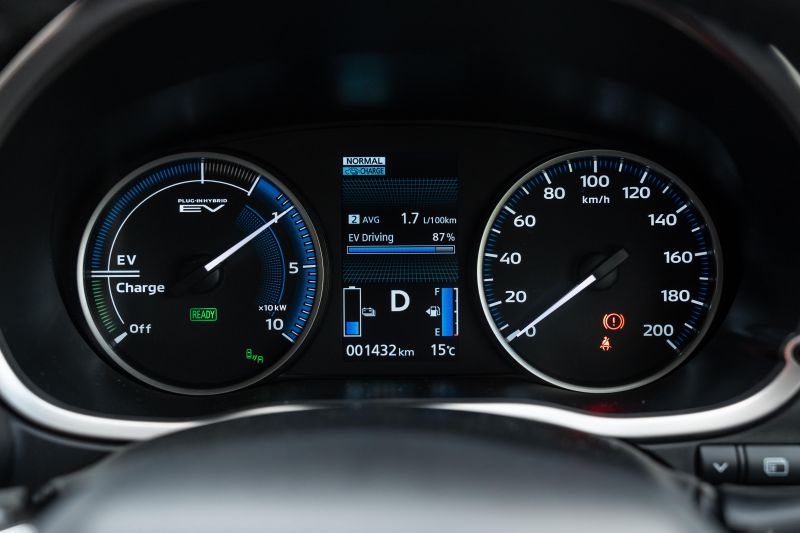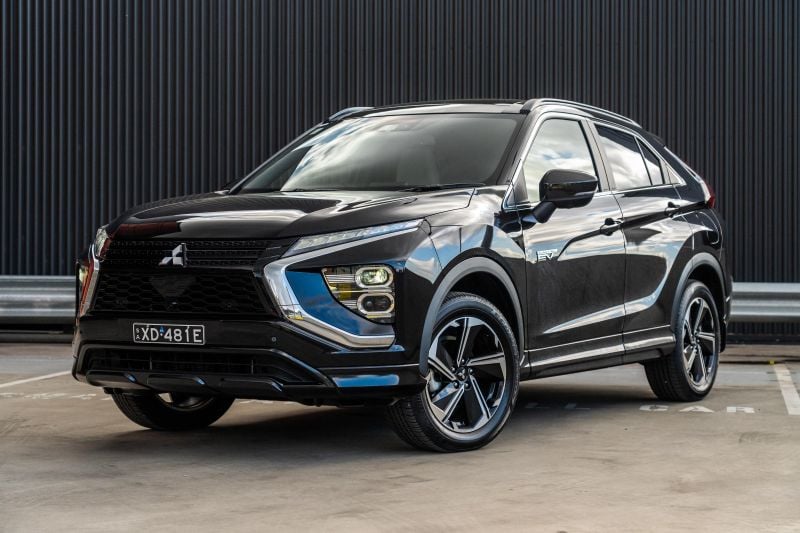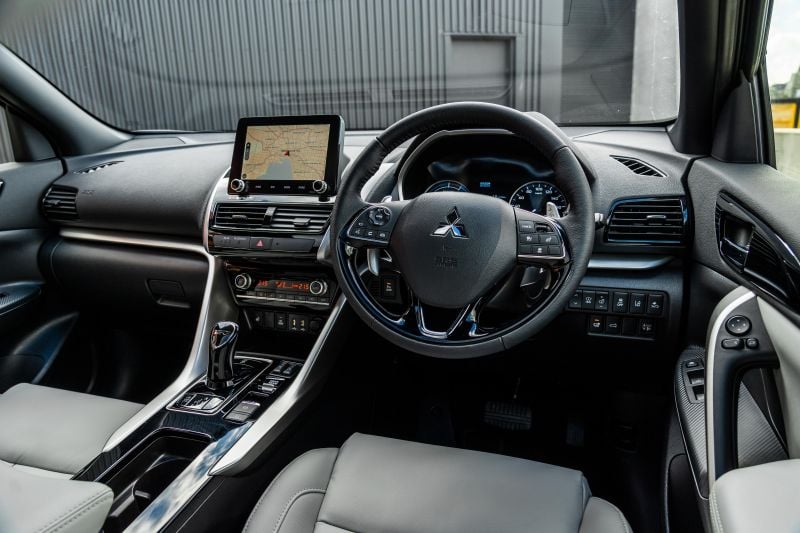Electric cars are flying on the sales charts, and regular hybrids are still in hot demand. Plug-in hybrids though? They’re languishing, as Australians look past their (slightly confusing) combination of petrol and electric power.
That’s a problem for Mitsubishi. It’s positioning itself as a plug-in hybrid (PHEV) specialist going forward, in a big to snap up sales from people who want to commute on electric power, and enjoy a road trip without using Australia’s burgeoning public charge network.
Along with the flagship Outlander PHEV, the brand offers the small-to-mid-sized Eclipse Cross with plug-in power.
With a sticker price in the mid-$50k range, the range-topping Exceed on test is more expensive than popular pure electric options such as the BYD Atto 3, and is priced in line with larger series hybrids like the Toyota RAV4 and Honda ZR-V.
Does it have what it takes to stand out among that crowd?
How much does the Mitsubishi Eclipse Cross Plug-in Hybrid Exceed cost?
The range-topping Exceed is $55,990 before on-road costs, up $1500 relative to 2022.
It’s $7700 more expensive than the base ES, and $4750 more than the mid-range Aspire. It’s also $14,000 pricier than the Eclipse Cross Exceed with a petrol engine.
Pure PHEV rivals are non-existent. The Kia Niro PHEV is no more, and the Ford Escape PHEV is dead – and brands aren’t bothering bringing new options Down Under in the face of very limited demand.
On the electric front, the Eclipse Cross goes head-to-head with the BYD Atto 3 Extended Range ($51,011) and the MG ZS EV Long Range ($55,990).
In the hybrid space, it takes on the Toyota RAV4 Cruiser AWD Hybrid ($54,410) and Nissan X-Trail Ti-L e-Power ($54,690).
2023 Mitsubishi Eclipse Cross Plug-in Hybrid EV pricing:
- Mitsubishi Eclipse Cross PHEV ES: $47,290
- Mitsubishi Eclipse Cross PHEV Aspire: $51,240
- Mitsubishi Eclipse Cross PHEV Exceed: $55,990
Prices exclude on-road costs
What is the Mitsubishi Eclipse Cross Plug-in Hybrid Exceed like on the inside?
The Eclipse Cross has a generous equipment list, but it all looks and feels a bit cheap inside given the $55,000 price.
On the plus side it’s very functional, and there’s a solid amount of space given the compact-ish exterior.
The driver and front passenger sit on leather seats perched up high for a commanding view of the road ahead, complete with electric adjustment. Shorter drivers won’t struggle to get comfortable, tall drivers like me might struggle to get low enough.
Technology is where the Eclipse Cross falls down. At 8.0 inches the infotainment display is now small alongside what cheaper rivals offer, and it’s running software that looks and feels at least two generations old.
It looks home brand, doesn’t respond particularly quickly to inputs, and features a blocky font that’s not particularly easy to make out on the move.
Wired Apple CarPlay and Android Auto allow you to sidestep the factory system.
There’s also a sense this is a cheap car dressed up like an expensive one. The climate control pod with its orange backlighting, haphazardly arranged buttons for driver assist systems, and the small trip computer – with no digital speedo – all feel cheap and nasty in a $55,000 new car.
Piano black trim dominates the transmission tunnel, and is prone to scratches, dusts, and fingerprints.
Storage spaces abound up front, with spacious bottle holders in the front doors, cupholders in the central tunnel, and a deep bin beneath the central armrest, and a phone-shaped slot below the dashboard. Dual USB-A ports are on hand to charge devices up front.
Legroom is solid in the back seat, thanks in no small part to the long wheelbase. It’s not on the same level as a Toyota RAV4 or Nissan X-Trail, and is more in keeping with a Kia Seltos or Hyundai Kona back there.
Headroom is a weak point, however. The sloping roofline and panoramic sunroof mean tall teenagers will have their heads brushing the headliner, and tall adults will feel very boxed in.
ISOFIX points feature on the outboard rear seats, and there’s a trio of top-tether points. The outboard rear seats are heated, and the USB ports will keep kids with iPads happy on longer drives… but the lack of air vents is hard to excuse.
Open the boot and you’ll find 359L of space, measured to the top of the second-row seat back, which is down 46L on the petrol versions.
The placement of the battery pack means there’s no spare wheel whatsoever. Lift up the boot floor and you’ll find some storage nooks, inside which sit a charger and the tyre repair kit.
On either side of the boot floor, there are also small niches. Unfortunately the rear seats don’t fold completely flat.
What’s under the bonnet?
The Mitsubishi Eclipse Plug-In Hybrid EV is powered by a 2.4-litre naturally-aspirated four-cylinder petrol engine, an electric motor on each axle, and a 13.8kWh lithium-ion battery pack.
The petrol engine produces 94kW of power and 199Nm of torque, the front electric motor makes 60kW and 137Nm, and the rear one makes 70kW and 195Nm. There’s no combined system output figure available.
Drive is sent through a ‘Super-All Wheel Control’ all-wheel drive system capable of torque vectoring.
The Mitsubishi Eclipse Cross PHEV consumes a claimed 1.9L/100km on the combined cycle, and EV range is a claimed 55km. The fuel tank holds 45L and requires a minimum of 91 RON unleaded petrol.
Commuting to and from work, and charging the battery at our office in Melbourne I saw between 0.8 and 1.0L/100km.
But, a weekend road trip (Melbourne to Rye, driving around on the peninsula, and back) with no ability to charge saw that average blow out to 5.0L/100km.
It’s very efficient if you can charge it, but if you’re not able to plug in this PHEV is less efficient than a Toyota hybrid.
How does the Mitsubishi Eclipse Cross Plug-in Hybrid Exceed drive?
With a full battery, the Eclipse Cross does an impressive impersonation of an electric car.
Where some plug-in hybrids feel undercooked running on pure electric power, it’s able to move effortlessly with the traffic between standstill and about 80km/h without the petrol engine firing.
It’s smooth and quiet, and you’re able to use the oversized metal paddles behind the steering wheel to dial in the amount of regenerative braking you want – ranging from none, to a level that almost allows for one-pedal driving.
Flatten the accelerator and the petrol engine kicks into gear with a flourish. It’s a bit gruff at first, but settles down once it’s warm.
Mitsubishi has been making plug-in hybrids for longer than most brands, and it shows. The way the petrol and electric power sources combine is impressively smooth, to the point where you don’t need to spend much time thinking about what’s happening under the skin.
When the battery goes flat though, you’re more aware of what’s happening. This is a heavy car at 1900kg, and the naturally-aspirated petrol needs to work quite hard to get the car rolling, undermining refinement.
The weight of the batteries, electric motors, and all the associated hybrid kit also damages the ride and handling. The Eclipse feels heavy over speed humps or dips, bouncing around in a way the petrol car doesn’t, and it smacks hard into potholes or sharp-edged bumps.
We’ve experienced what the plug-in hybrid powertrain in the Eclipse Cross can do on a snowy or a gravel road, shuffling torque around to make it handle like a smaller, lighter car. It’s impressive, but it’s also not all that relevant to the average buyer.
They’re more likely to notice the steering is slower and heavier than is the case in rivals around the city, making the Eclipse Cross harder to park, or to clock the massive blind-spot that comes with that sloping roofline.
On the highway, the adaptive cruise control is smooth and smart, but the lack of lane-keeping assist (which will actually steer you back between the white lines, rather than just beeping at you) is disappointing at this price.
At least the car is quiet; where some electric cars or plug-in hybrids have a lot of wind and road noise at 100km/h, the Eclipse Cross has been well insulated against the outside world.
What do you get?
Eclipse Cross PHEV ES highlights:
- 18-inch alloy wheels
- Mode 2 charging cable
- Mode 3 charging cable
- Acoustic vehicle alert system
- Halogen headlights
- LED daytime running lights
- Power-folding door mirrors
- Driver-side window auto up/down
- 8.0-inch touchscreen infotainment system
- Wired Apple CarPlay, Android Auto
- 2 x front, 2 x rear USBs
- 4-speaker sound system
- Climate control
- Cruise control
- Electric park brake
- Keyless entry and start
- Leather-wrapped steering wheel
- Chrome inside door handles
- Fabric upholstery
- Illuminated front door trim
- Rear centre armrest with cupholders
Eclipse Cross PHEV Aspire adds:
- Automatic LED headlights
- Automatic high-beam
- LED fog lights
- Rain-sensing window wipers
- Privacy glass
- Roof rails
- Silver front lower bumper
- Black front bumper centre garnish
- Black grille insert
- Black and insert rear lower bumper
- Black side door garnish
- 8-speaker sound system
- Dual-zone climate control
- 1500 V2L capacity
- Electrochromatic rear-view mirror
- Microsuede leather-look upholstery
- Heated front seats
- Driver seat power adjustment
Eclipse Cross PHEV Exceed adds:
- Sunroof
- Electric tailgate with hands-free lock and close (NEW)
- Head-up display
- Satellite navigation
- Ultrasonic mis-acceleration mitigation system
- Black leather upholstery
- Light grey leather upholstery (NEW)
- Heated steering wheel
- Heated rear seats
Is the Mitsubishi Eclipse Cross Plug-in Hybrid Exceed safe?
The Mitsubishi Eclipse Cross PHEV has a five-star ANCAP safety rating based on testing conducted on the petrol Eclipse Cross in 2017.
It received 97 per cent for adult occupant protection, 78 per cent for child occupant protection, 80 per cent for pedestrian protection, and 58 per cent for safety assist.
Standard safety features include:
- 7 airbags
- AEB with pedestrian detection
- Lane departure warning
- Rear-view camera
- Rear parking sensors
Stepping up to the Aspire gets you safety features including blind-spot monitoring, rear cross-traffic alert, adaptive cruise control, front parking sensors, and a surround-view camera.
The flagship Exceed also gets what Mitsubishi calls Ultrasonic Mis-acceleration Mitigation System, which is designed to stop the car if you press the accelerator instead of the brake at low speeds.
How much does the Mitsubishi Eclipse Cross Plug-in Hybrid Exceed cost to run?
The Eclipse Cross PHEV is covered by a five-year, 100,000km warranty which can be extended to 10 years and 200,000km if you service within the Mitsubishi dealer network.
The high-voltage battery is covered for eight years or 160,000km though.
Logbook servicing is required every 12 months or 15,000km, whichever comes first. Mitsubishi offers ten years of capped pricing servicing which is as follows:
| 12 months / 15,000km | $349 |
|---|---|
| 24 months / 30,000km | $549 |
| 36 months / 45,000km | $399 |
| 48 months / 60,000km | $549 |
| 60 months / 75,000km | $399 |
| 72 months / 90,000km | $899 |
| 84 months / 105,000km | $499 |
| 96 months / 120,000km | $899 |
| 108 months / 135,000km | $499 |
| 120 months / 150,000km | $899 |
| Total | $5940 |
CarExpert’s Take on the Mitsubishi Eclipse Cross Plug-in Hybrid Exceed
Plug-in hybrids are hard to mark, because they perfectly suit a very small group of people.
But if you’re mostly driving on electric power we’re at the point where an EV arguably makes more sense for the money, and if you’re always using the engine there are plenty of quality hybrids that’ll sip fuel without the complexity of a plug-in.
With that in mind, the Eclipse Cross feels lost.
It’s a decent size and possesses a clever powertrain capable of handling daily duties on e-power – but it’s worth looking at the Outlander Plug-in Hybrid EV that’s $5000 more expensive.
With a more modern, spacious interior and newer powertrain, it misses some of the luxuries from the Eclipse Cross but is a better all-rounder.
Beyond the plug-in hybrid world, the Eclipse Cross is flanked by too many good rivals to be worth your time. No matter how clever the powertrain, its home brand interior means it just doesn’t feel like a $55,000 car in 2023.
The BYD Atto 3 is better looking, features a better interior, and doesn’t have to worry about lugging around a petrol engine if you do most of your driving in the city.
And, if you’re constantly on the open road, a Toyota RAV4 Hybrid uses a very similar amount of fuel to the Eclipse but has a better cabin, and isn’t slapped with road tax in Victoria.
If you are set on an Eclipse Cross PHEV, we’d recommend saving your money and going for the entry-level model.
Click the images for the full gallery

